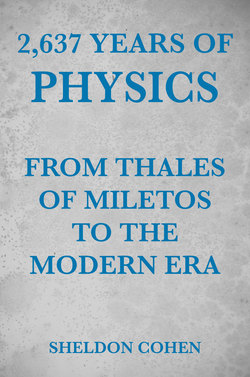Читать книгу 2,637 Years of Physics from Thales of Miletos to the Modern Era - Sheldon Cohen - Страница 18
На сайте Литреса книга снята с продажи.
ОглавлениеWHAT IS LIGHT?
The Greeks were also responsible for the first enlightened discussion on the subject of light. Prior to their serious evaluation of this phenomenon, the world was content to accept God’s pronouncement: Let there be light: and there was light. Light was the antithesis of dark. Because of it, all life on earth was given the gift of sight. But what was it that caused our eyes to perceive the world around us when the sun or the moon or fire allowed us to see? What did our eyes do that allowed us to visualize distant objects? Did our eyes emit something that sped rapidly to a distant or nearby object, and once having struck the object caused us to see it, or did light issue forth from any luminous object and reach our eyes, and in doing so give us a visible world?
Pythagoras (582-500BCE)
championed this latter thought many years in the past.
These conflicting theories only served to raise many more questions. If light entered our eyes enabling us to see, or if something left our eyes giving us the same ability, what was it that entered or left? What about its size? What does it weigh? Very little, no doubt, if it has weight at all? What is its speed? Why does it pass through some objects and not others? Why does cloth block light and thick glass allow it to pass through?
These questions would remain unanswered for centuries, and the solution would be intimately connected with the development of the atom theory that the Greeks so brilliantly propounded.
